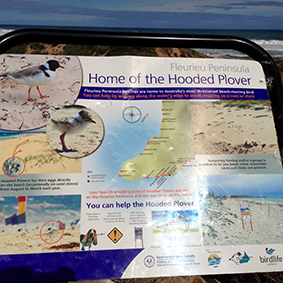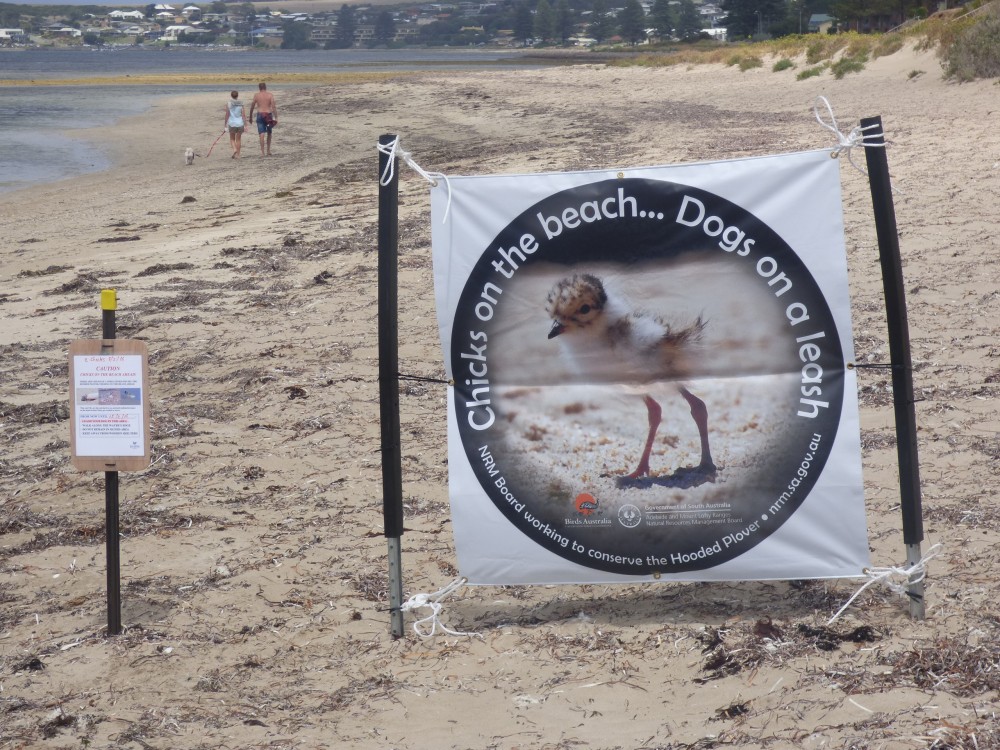The threatened hooded plovers make simple nests in the sand and lay well camouflaged eggs that are difficult to spot when walking, riding, or driving along the beach.
To help these birds to successfully raise their chicks, Alexandrina Council works closely with the Hills and Fleurieu Landscape Board SA and volunteers from BirdLife Australia to monitor and manage our four to five hooded plover pairs on our beaches. This includes the erection of signs and temporary fencing to protect nesting birds or chicks. Volunteers spend countless hours observing chicks, providing chick shelters, giving out leaflets, educating beach goers and campaigning on social media.
Across Adelaide and the Fleurieu Peninsula, 31 pairs are known to breed with up to 14 offspring surviving. Unfortunately, dogs are one of the biggest threats to breeding Hooded Plovers as the tiny chicks must venture to the water’s edge to feed themselves.
We all have a role to play by keeping our distance and by having dogs on leashes during the breeding season. In collaboration with the Landscape SA, Council continues to eradicate foxes that are known to predate on nests.
You also can help protect hooded plovers by:
- keeping your dog on a leash when at the beach – especially during spring and summer
- only walking below the high tide mark during the nesting season
- not driving on the beach or dune areas
- looking out for signs and fences, indicating there is a nest or chicks
- moving away quietly when you see hooded plovers
- becoming a volunteer with BirdLife Australia
- spreading the word about beach-nesting birds!
The Hooded Plover Program is part of BirdLife Australia’s national beach-nesting bird program and is supported regionally by Green Adelaide, Landscapes Hills and Fleurieu, local councils and volunteers.
To find out more about the Hooded Plover Program and to learn about our fabulous volunteers, visit the Hills and Fleurieu Landscape Board SA website.



